Everyone in the web development industry, be it businesses or developers, knows PHP has matured as a preferred programming language. As per W3Techs, more than 74% of websites use PHP as a scripting language even after 30 years of being scripted. Over all these years, several frameworks have been built on PHP, aiming to enhance its capabilities and streamline development processes. For instance, one of the oldest frameworks—CodeIgniter, is known for its lightweight structure, and Symfony for its flexibility and modularity.
Want expert recommendations? Explore our handpicked list of top LAMP Stack development companies.
Laravel: What is It?
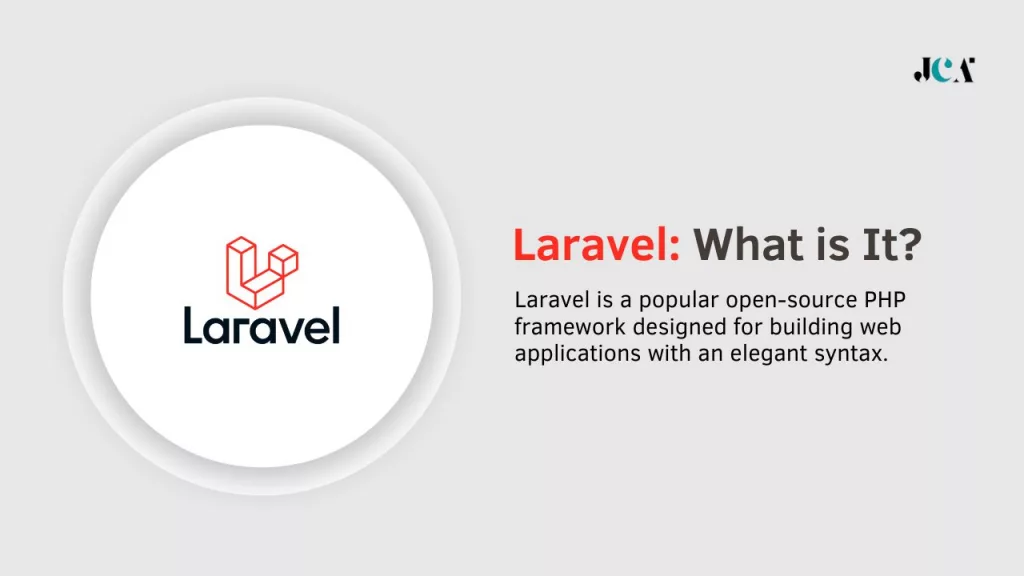
Laravel is a popular open-source PHP framework designed for building web applications with an elegant syntax. It simplifies common tasks such as routing, authentication, caching, and database management, making development faster and more efficient. Laravel follows the MVC (Model-View-Controller) architecture, ensuring a structured codebase. It includes features like Eloquent ORM for database operations, Blade templating for dynamic views, and an Artisan command-line tool for automation.
Laravel also supports robust security measures, API development, and seamless integration with third-party services. Known for its developer-friendly approach, Laravel is widely used for creating scalable and maintainable web applications.
What is Laravel Used For?
Laravel is used for developing web applications, APIs, and enterprise solutions with a structured and efficient PHP framework. It simplifies tasks like user authentication, database management, routing, and caching, making development faster and more secure. Laravel is ideal for building content management systems (CMS), e-commerce platforms, customer relationship management (CRM) systems, and SaaS applications. Its built-in features, such as Eloquent ORM, Blade templating, and the Artisan command-line tool, streamline coding and enhance performance. With strong security measures, scalability, and API support, Laravel is a preferred choice for modern web development projects.
Why is Laravel the Most Popular PHP Framework?
As of now, Laravel powers over 1,086,000 live websites worldwide. In the United States alone, more than 296,000 websites are built using Laravel. Historically, Laravel has been utilized by over 2.6 million websites globally.
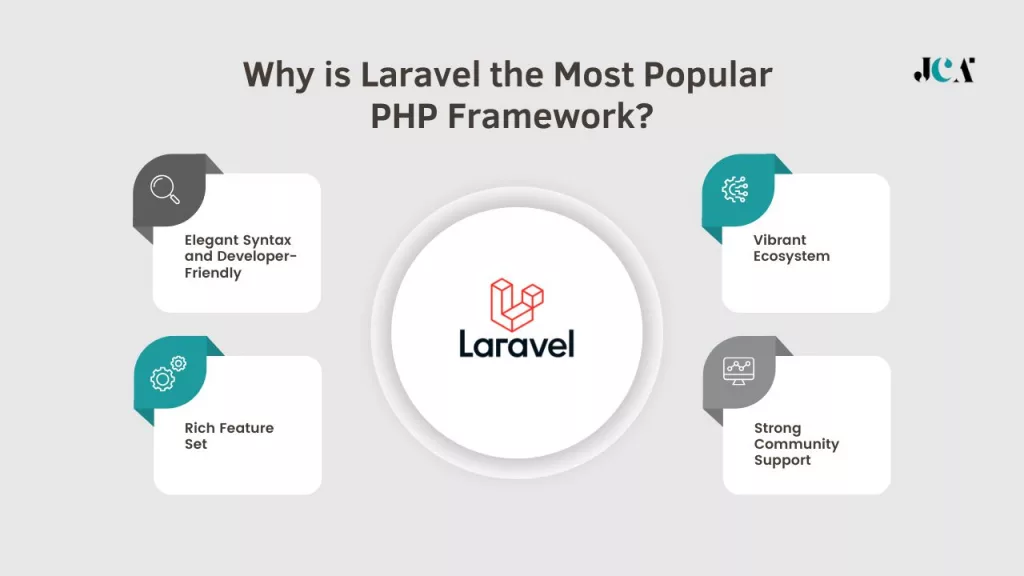
So, what’s driving this widespread adoption? Here are a few reasons:
- Elegant Syntax and Developer-Friendly: Laravel’s syntax is clean and straightforward, making coding more enjoyable and less of a headache.
- Rich Feature Set: From built-in authentication to seamless database migrations, Laravel comes packed with features that simplify complex tasks.
- Vibrant Ecosystem: Tools like Laravel Forge and Laravel Nova extend its functionality, offering solutions for deployment and administration.
- Strong Community Support: With a large, active community, finding tutorials, forums, and third-party packages is a cinch.
Top Benefits of Laravel: Why It’s Still a Preferred Web Development Framework
Laravel has been around for over a decade, yet it continues to dominate the PHP framework space. But why do developers and businesses still prefer Laravel in 2025? Let’s break it down.
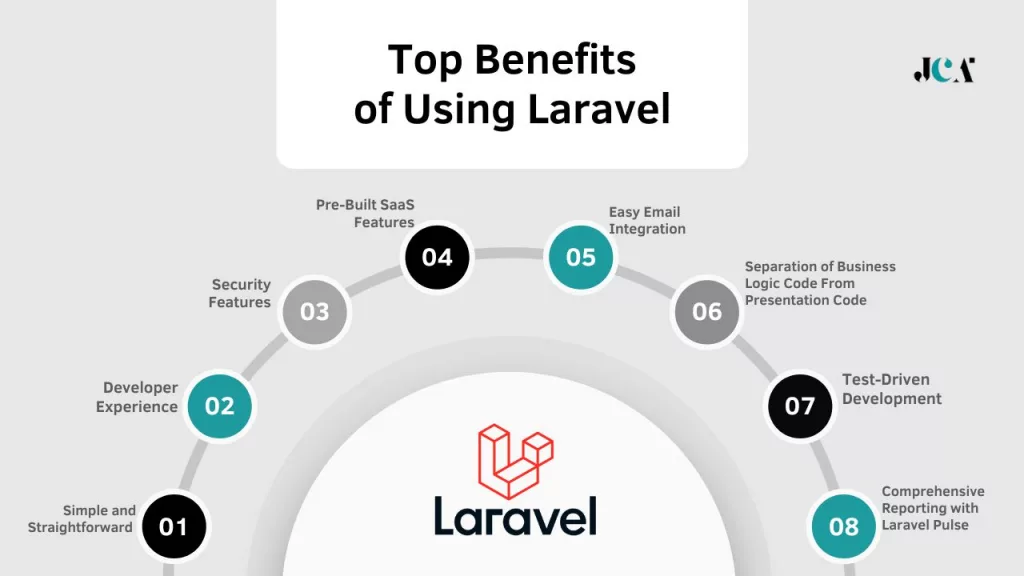
1. Simple and Straightforward
Building custom Laravel solutions is very straightforward due to the framework’s simple architecture, set of built-in features, and PHP’s legacy backing. It offers Eloquent ORM for complex database operations, features like built-in routing for easy URL handling, and Blade templates for building clean UI logic.
Additionally, PHP’s expressive syntax makes your codebase scannable and maintainable without requiring quick-fix solutions or additional boilerplate code segments, allowing you to save yourself from long-term technical debt.
2. Developer Experience
Even today, many prefer Laravel for web development because of its hassle-free developer experience (DX). Laravel offers a dedicated API called Artisan CLI, which is well-documented and makes the entire process more efficient by automating common tasks like database migrations, controller generation, and model creation. Additionally, with an intuitive directory structure, Laravel allows developers to access all information easily and write clear, minimalistic code easily, improving the overall DX.
3. Security Features
Laravel-based web solutions emphasize security. The framework offers several built-in security mechanisms that protect your web apps from common vulnerabilities. For instance, its CSRF tokens protect forms against cross-site request forgery, Eloquent ORM prevents SQL injections, and Bcrypt hashing capability allows developers to store passwords securely.
4. Pre-Built SaaS Features
Today, SaaS (software-as-a-service) solutions sell themselves by powering everything, from internal productivity tools to consumer-facing applications. When building a web solution using Laravel, you get a dedicated SaaS toolkit—Laravel Spark. This pre-built suite offers numerous out-of-the-box features that modern web solutions thrive on, including:
- User authentication & role management features to implement login, registration, and multi-user access directly.
- Subscription models via Stripe and Paddle integration, eliminating the need to configure a payment system manually.
5. Easy Email Integration
Laravel offers a Mail facade with simple, expressive syntax that makes it easy to send emails through services like Mailgun and SMTP. This facade comes with an internalized notification system (accessible through a single API) that alerts developers about all actions, including sent emails, SMS messages, and Slack messages, reducing reliance on other third-party integrations.
6. Separation of Business Logic Code From Presentation Code
Many older PHP-based web apps mix backend logic with frontend presentation, resulting in messy, hard-to-maintain code. However, with Laravel-based web development, developers can save themselves from getting stuck in PHP/HTML code by using an MVC (Model-View-Controller) architecture.
In such an architecture, the app’s main segments, database queries, logic, and presentation are all divided into separate elements.
- Models handle data interactions and queries
- Views (using Blade templating) handle the UI autonomously
- Controllers manage application logic and process user requests
7. Test-Driven Development
Laravel-based web solutions also benefit from a test-driven development process. The framework comes with PHPUnit support and built-in testing helpers (functions) like assertDatabaseHas() and actingAs() to validate database transactions and user authentication events in real-time.
8. Comprehensive Reporting with Laravel Pulse
Laravel is often praised for its reporting dashboard, Laravel Pulse. This dashboard offers insights into database queries, API response times, and background jobs, eliminating the need to integrate other third-party observability tools.
Challenges in Using Laravel for Modern, Faster Web Development
Laravel is a powerful and feature-rich framework, but like any technology, it comes with its own set of challenges. While Laravel makes web development easier in many ways, developers may face hurdles when trying to build high-performance, modern web applications. Let’s explore the key challenges and how to overcome them.
1. Upgrading Laravel Apps Can be Risky and Disruptive
Despite providing long-term support for many features, Laravel’s overall stability isn’t too solid, especially when compared to other development frameworks like Symphony. This is because upgrading to newer Laravel versions may require extensive refactoring, putting its existing functionality and performance on the line.
2. Extensive Beginner-Friendly Documentation
While Laravel comes with proper documentation covering its syntax, features, and usage examples, the majority of it is designed for entry-level developers. As a result, if experienced Laravel developers have to look something up, they have to spend extra time cutting through unnecessary, standard syntax. This wastes a significant amount of time going through object maps, files/directories, or request life cycles before actually finding the desired concept.
3. Keeping up with Frequent Updates
Laravel follows a rapid release cycle and rolls out major updates very frequently. While this makes Laravel modern and future-agnostic, it also forces your developers to stay on top of the updates. If they fall behind, they might soon find themselves dealing with outdated dependencies and broken compatibility, making future updates even harder.
4. Directory Structure and File Layout Can Feel Overwhelming
Laravel’s highly organized file and directory structure can sometimes make even simple, lightweight applications feel bloated. This is because Laravel developers have to work with multiple directories, such as app/, config/, routes/, resources/, storage/, etc., simultaneously. It is often considered a drawback when compared to the same in other minimal frameworks like Flask (Python) or Express.js (Node.js).
How Dedicated Laravel Developers Can Overcome Them
Instead of solely relying on your internal web developers, a proven and efficient way to overcome the above development challenges is to hire dedicated Laravel developers. Let’s see how.
1. Upgrading Apps while Keeping Functionality Intact
Dedicated Laravel developers have years of hands-on experience with version upgrades and know how to update diverse applications (including FinTech apps or those with complex logic) without breaking functionality. They can:
- Conduct compatibility checks before upgrading
- Use Laravel Shift in combination with manual migration strategies
- Implement automated tests to catch errors
- Refactor deprecated features to align with the latest Laravel standards
2. Reducing Reliance on Extensive High-Level Summaries
Having worked on countless projects over many years, dedicated Laravel developers are often experts in their sub-domains, be it core development, testing, refactoring, or updating. This level of understanding of Laravel’s structure allows them to:
- Provide project-specific best practices
- Guide your teams on Laravel’s request lifecycle, object mapping, and coding standards without having to rely on documentation
- Offer mentorship and onboarding to help junior developers
3. Implementing Frequent Updates
The dedicated Laravel developers you hire can carefully implement all updates and upgrade your app to newer versions as soon as they stabilize. They align their processes with official release cycles, adapt legacy code to new standards, and use modular coding practices for more efficient development and deployment.
4. Overcoming the Prescriptive Nature of Laravel
To work with Laravel’s highly structured files and directories, you can hire Laravel developers to optimize folder organization by using controllers, monitor repository patterns, and add code comments, using which your teams can navigate the project easily.
That said, finding and hiring the right Laravel developers is no easy task. With an active and rapidly growing developer community, identifying professionals who match your technical requirements, experience level, and soft skills can be challenging.
A faster and more efficient approach is to opt for staff augmentation through a reliable service provider. These providers offer a pre-vetted pool of Laravel developers and streamlined hiring processes, allowing you to onboard skilled talent quickly and without the hassle of lengthy recruitment cycles. Alternatively, you can also consider outsourcing your web app project to Laravel development service providers.
Finals Thoughts
Even after 15 years of its release, Laravel stands out as a preferred and reliable web development framework for both developers and businesses. Its elegant syntax, built-in security, and an ecosystem of pre-built toolkits make it an excellent choice for building everything, from SaaS applications to enterprise-grade web solutions.
If you’re planning to develop a web solution but unsure which framework to choose, trust me; Laravel is a solid choice. Despite the challenges you may come across, it remains a reliable framework for developing modern web apps because even the toughest of them (maintaining functionality and keeping up with regular updates) can be effectively managed by hiring skilled Laravel developers who know the ins and outs of this platform. So, without worrying, get started with your Laravel project.







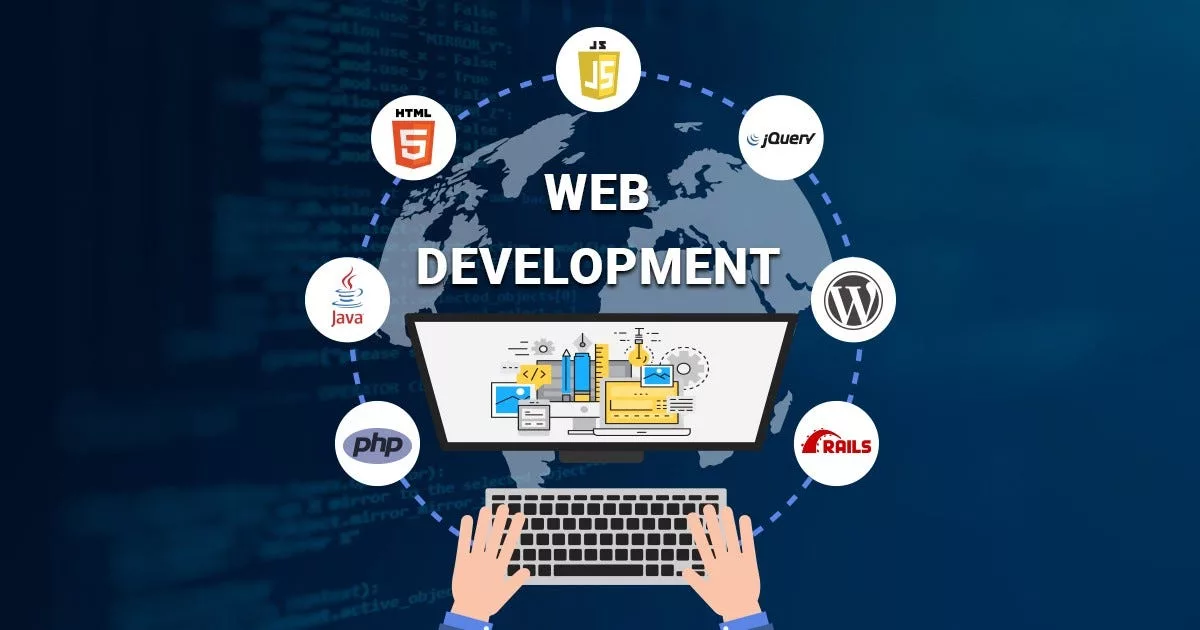
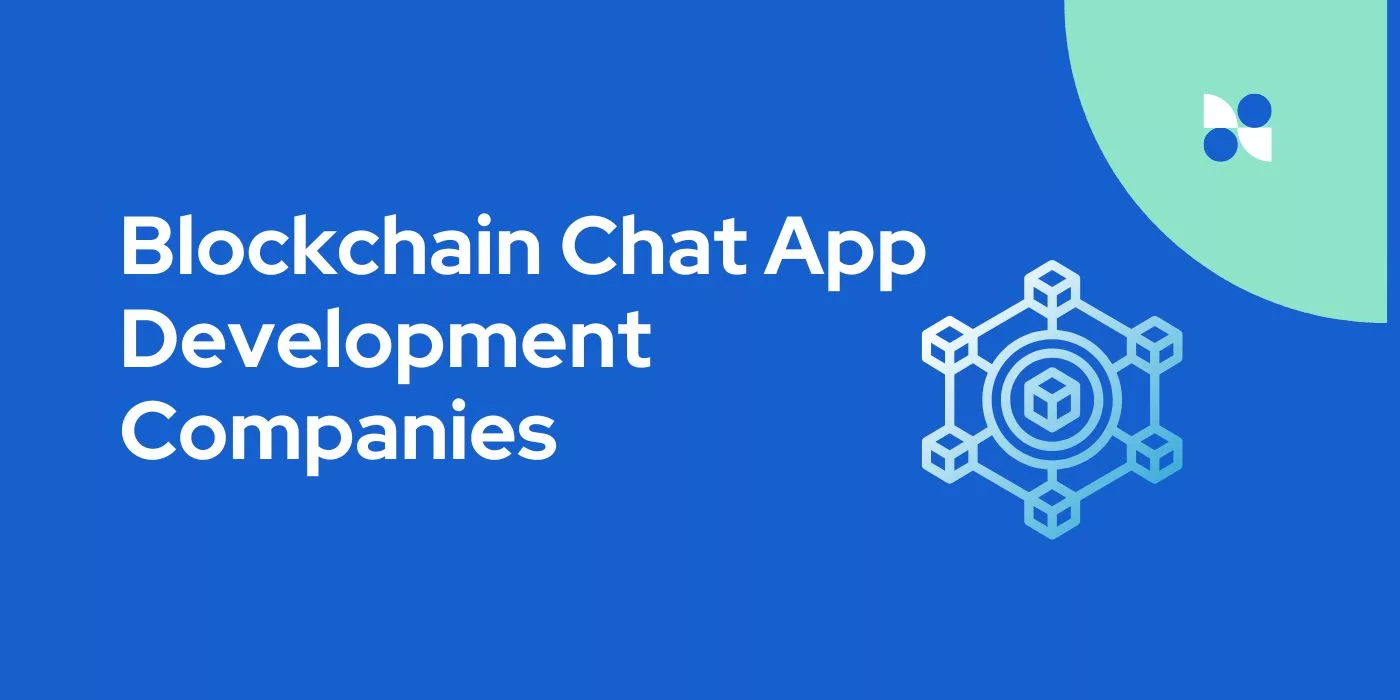

Leave a Reply